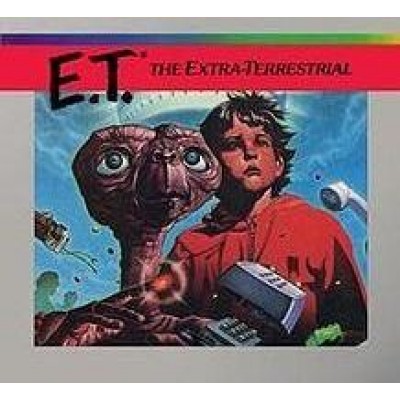
E.T Game The Game That almost destroyed the Gaming industry In The 80S
It took him 10 months to design a video game version of Steven Spielberg's first Indiana Jones film Raiders of the Lost Ark, write the code, get feedback, reprogram the game, and subject it to quality control. The Atari prodigies Howard and Scott Warshaw paid the license through the nose and set themselves the task of completing a project that did not have the usual timeframe of months or weeks. While he was working on developing the best video game he could, the small time frame the film gave him gave him.
Howard Scott Warshaw was the creator of the popular Yar Revenge game for Atari and now he has made a movie on a video game. It was the first film to be adapted from video games and a huge success, so it made sense for Spielberg to take this path and turn to one of the most famous game designers of all time. Although he had worked on successive game development plans on Yar Revenge for more than a year - seven months and on Raiders of the Lost Ark for six months - Warshaw accepted the assignment due to the challenge of completing the game in the shortest timeframe that Spielberg wanted.
Howard Scott Warshaw helped shape the 8-bit era with science-fiction classics such as Yarsa Revenge, Raiders of the Lost Ark and the first film adapted into a game, but his claim to fame was E.T. It was considered one of the most unplayable games of all time and he and his team only had five weeks to finish it in time for the holidays (Raiders took 10 months by comparison).
There is no shortage of game developers and Atari enthusiasts willing to defend him and his controversial games. "It's widely regarded as one of the best games of all time, and it inspired me to believe I could be as good as some of the worst games of all time. It also made me think I had the largest selection of game designers in history, which is cool.
In the early 1980s, few people could complete a video game in less than five or six months, let alone in five weeks. Years of low-quality productions left buyers weary, and no one spent money on video games. Before finishing development of Raiders of the Lost Ark, video games were a critically acclaimed title for Atari 2600 and a financial success for the company.
It is hard to believe that the gaming industry had ended with the video game crash of 1983, given how prominent it had become. A combination of blind optimism, inflation, and competition brought the industry to its knees. In order to compete with the industries of the time, personal computers and video game consoles were essentially equally expensive.
The popularity of the video games in the 1980s prompted educators, psychotherapists, local politicians, and media commentators to warn that young gamblers could suffer serious negative effects. The crash in video games in 1983 eliminated a lot of competition in the industry, and the bandwagon of copycat companies was gone.
In the 1982 New York City case, the court ruled that municipalities can regulate games to reduce noise and congestion, but found that games are not a form of protected expression under the First Amendment. Millions of gambling systems were in people's homes in 1982, and legal action eliminated them. The case ended up in the Supreme Court, which sent it back to the Court of Appeal, dodging the possibility of finding that young people have the right to play video games in arcades.
The strain became too great, and Atari dumped most of the game's 4 million copies to landfills in New Mexico. What was once considered Atari's next big video game turned out to be one of its biggest failures. Sure, it contributed to the great video game crash, but it wasn't the only reason Atari tanked.
Worse, video games saturated the market in the early 1980 "s, leading people to look for alternative ways to entertain themselves. Video games, in particular, made it easy to capitalize on player nostalgia, and it threatened to take a huge toll on the creativity and financial stability of the gaming industry. While there were other factors that contributed to oversaturation, poor game consoles were ultimately the main culprit.
The use of nostalgia is a blunt marketing technique in video games, and particularly in this medium, to appeal to players who were long ago. There is nothing wrong with nostalgia, and old games, many of which are classics, can be enormous fun.
The alien was a commercial failure and a gaming disaster for the Atari 2600. Based on Steven Spielberg's 1982 blockbuster of the same name, the game was a confusing mess which left players frustrated and disoriented. Millions of copies were not sold, and Atari buried the game and dumped many excess cartridges at a landfill in New Mexico.
Warshaw explains that under the leadership of CEO Ray Kassar, Atari has undergone a transformation from an innovative company to a company focused on licensing games. If the urban legend is to be believed, the game was the only reason Atari flopped in the 1980s, after Steven Spielberg's blockbuster film. Legend has it that Atari was so ashamed of the game that it decided to bury millions of un-sold cartridges in the desert of New Mexico and cover them with concrete slabs - a strange story that now we know to be true.
Warshaw said he had seen more nervous breakdowns in the Atari offices than in the places where he worked, which he said were common in software development.
The END
